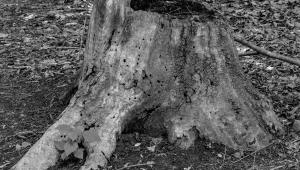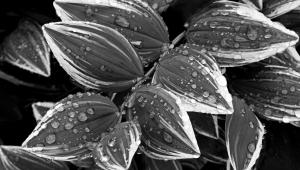Digital Help
Q&A For Digital Photography
Digital Help is designed to aid you in getting the most from your digital photography,
printing, scanning, and image creation. Each month, David Brooks provides solutions
to problems you might encounter with matters such as color calibration and management,
digital printer and scanner settings, and working with digital photographic
images with many different kinds of cameras and software. All questions sent
to him will be answered with the most appropriate information he can access
and provide. However, not all questions and answers will appear in this department.
Readers can send questions to David Brooks addressed to Shutterbug magazine,
through the Shutterbug website (www.shutterbug.com), directly via e-mail to:
editorial@shutterbug.com
or fotografx@mindspring.com
or by US Mail to: David Brooks, PO Box 2830, Lompoc, CA 93438.
--George Schaub
Choosing A Photo Inkjet Printer
Q. I recently purchased the Canon EOS Digital Rebel and now I'm considering
a wide format printer. I had decided on the new Epson R1800 prior to talking
to the salesperson. It was suggested that I consider the Canon i9900 because
of its removable ink carriage. This was suggested because the Epson had a tendency
to clog and wasted a lot of ink in the cleaning process.
I haven't heard anything about the longevity of Canon inks. I do know
that their paper selection is limited compared to Epson. And, too, Epson uses
the UltraChrome ink that "I have heard" put Epson out front in the
print longevity arena. One never knows the salesperson's agenda. Please
help.
B. Robinson
A. Although it is technically correct that the Canon has a
removable ink carriage, in practical usage terms it does not provide a significant
advantage. Print head ink clogging can be a problem with every printer, a problem
that can be largely avoided by a little user discipline. Always turn a printer
off when it's not being used to make prints. And, never let a printer
sit without any printing activity for more than a few days, if possible (vacations
are an exception).
The Canon i9900 is a printer I tested and reviewed in Shutterbug about a year
ago. It is an excellent performing printer. However, it does use dye-base inks
that are more susceptible to fading than the Epson pigment-based inks. And you
are correct, Canon offers a very limited selection of printing paper made specifically
for their printer.
Possibly your salesperson obtains a higher commission percentage if he sells
a Canon printer compared to an Epson.
The Problem Of Dust On Digital SLR Sensors
Q. As to be expected, I've had specks of dust of various sizes on my Nikon
D70's sensor or more exactly on the low-pass filter in front of the sensor.
The resulting blemishes in the image can be removed easily with Photoshop's
Clone Stamp tool or Healing Brush tool. Now that too many specks have accumulated,
I want to remove them safely. The Nikon D70 manual recommends cleaning by Nikon-authorized
service personnel or, when you want to clean the filter yourself, to only use
a blower and not touch the filter with any object. Nikon is reported to sell
in Japan only a do-it-yourself cleaning kit, including a cleaning fluid and
swabs to physically clean the filter. Using a blower, I can remove some but
not nearly all specks. Using a SpeckGRABBER from Kinetronics, which Kinetronics
claims is safe to use on sensor filters, I can remove most remaining specks,
although they are hard to locate on the filter, even when using a loupe. However,
the SpeckGRABBER leaves smudge marks wherever I carefully press it down onto
the filter to grab specks. These smudges result into slightly darker areas in
my images, particularly noticeable in blue sky areas. My next move is to order
Photographic Solutions' Eclipse cleaning fluid and Sensor Swabs. Photographic
Solutions guarantees these products to clean sensor filters and will pay for
any repairs resulting from damage to the camera if used correctly.
Update: I used a blower I just bought to blow some dust specks off of my D70
sensor filter and more specks appeared! After some more blowing, you guessed
it, more specks. I wrapped a lint-free piece of cleaning tissue around the blower
and blew into the tissue about 10 times. There appeared some specks on the tissue
and many more specks became visible using a loupe. It appears that this particular
blower, by the name of Hurricane and bought at a local pro photo shop, emits
small pieces of "rubber" that now cling to the sensor filter and
all over on the camera's inside. This has now become a cleaning job for
the Nikon service center in El Segundo, California, and will cost maybe $250-$400
and a couple of weeks time.
Your recommendations on how and how often to clean the sensor filter of my digital
SLR will be highly appreciated.
Frans Waterlander
A. It seems from what you wrote that you have explored the
potential ways to deal with dust on sensors, as well as what not to do, about
as thoroughly as possible. I really don't have anything to add.
From what information I get from users the dust problem seems to be most severe
with the Nikon D70. However, I was using a fairly new Konica Minolta Maxxum
7D recently that had some dust on the sensor. My personal cameras are Canons,
and being very popular, one would think if sensor dust were a problem it would
be reported as much or more by Canon users. So, I am suspicious of whether there
is more of an electrical field charge associated with CCD chips compared to
CMOS chips that attracts dust to the sensor surface.
It is also interesting to note Olympus, which uses CCD chips, uses in their
latest camera a dust membrane at the front that prevents dust from reaching
the sensor surface, which is itself kept clear of dust by being vibrated (sonic,
I believe). A close friend who has a Nikon D70, which was recently sent in to
Nikon for cleaning, just bought a Nikon D2X. The D2X has a CMOS chip. It will
be interesting to see if the D2X acquires dust on the sensor.
Most manufacturers put cautions about dust cleaning in their manuals. They should
be taken seriously. The one thing I might try, if I felt I needed to deal with
sensor dust myself, is to use a small vacuum (there are some made for cleaning
computers), and be sure a piece of soft rubber tubing is used on the tip inserted
into the camera shutter box, and then dislodge any dust with a very fine, soft
artist's watercolor detail brush. But, I think it is likely we will hear
more on both problems with and solutions for this problem as time goes on.

































